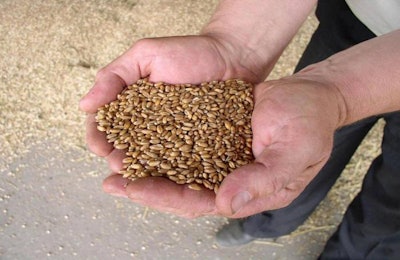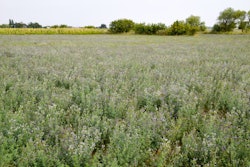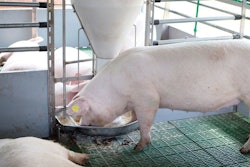
An international scientific breakthrough has resulted in a new wheat variety that yields up to 12% more than a conventional crop.
Researchers in Chile and the United Kingdom (U.K.) have solved one of the greatest challenges to achieving higher yields in one of the world’s most important grain crops — wheat.
Using a method developed at the University of York, scientists have successfully modified the growth of developing wheat grains. They achieved this by increasing the amount of a key protein that controls the growth of the plant.
In field trials in Chile, the modified wheat produced up to 12% more, primarily as a result of its bigger individual grains.
Contribution of wheat to global food security
With more people in the world, the demand for food is growing. As suitable arable land is limited, optimization of crop yield per unit area is a key aim to achieve food security.
As well as being a key grain in livestock feeds in many countries, wheat contributes around 20% of the calories consumed by the global human population, according to the university.
Over decades of selective breeding, plant breeders have been able to improve wheat yields significantly. This was achieved by focusing on increasing the number of grains per ear. However, progress has slowed over recent years.
Professor Simon McQueen-Mason from the University’s Centre for Novel Agricultural Products at the Department of Biology explained the main obstacle to further improvement in wheat yield.
“Attempts to increase the yield of wheat have been thwarted by the apparent tradeoff between grain size and grain number,” he said. “We decided to side-step this complex control system by giving a boost to the natural growth system that controls the size of plant tissues.”
Development of transgenic wheat
Collaborating on the research with the University of York were Professor Daniel Calderini of the Universidad de Austral in Chile, and Dr. Emma Wallington of the U.K.’s National Institute for Agricultural Botany.
A key stage in the development of the new transgenic wheat was an increase in the level of expression a particular group of proteins — expansins, according to McQueen-Mason.
As a group, the expansins play an important role in plant growth, according to the researchers. These proteins allow the cell wall to “relax,” so the cell itself can expand.
Taking a gene normally expressed in the root of wheat, the scientists were able to induce over‐expression of alpha‐expansin in wheat seeds during their early development. In this way, the seeds could grow in size significantly, without the usual detrimental impact on the number of grains.
Field trials
Under field conditions in Chile, the best of the transgenic wheats yielded 12.3% more than a conventional wheat variety. Of the four transgenic varieties tested, two produced improved yields at two different planting densities.
Soon to be published in the journal New Phytologist, the research paper is titled “Overcoming the trade‐off between grain weight and number in wheat by the ectopic expression of expansin in developing seeds leads to increased yield potential.”
In their conclusions, lead author Calderini and colleagues describe their results as an encouraging demonstration of the beneficial effects of expansin expression in developing wheat seeds. In practical terms, they showed that the previously observed tradeoff between grain weight and grain number can be overcome. This was translated into increased yield.
Further work is needed, they added, to repeat the experiments in different environments and with other varieties. They are working to make their results available to farmers and others in the value chain to inform their future crop decisions.

















